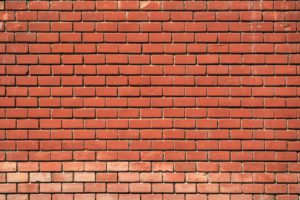Brick colours in Australia have played a pivotal role in shaping the nation’s architectural identity. From the iconic reds reminiscent of the Outback to the earthy browns reflecting the diverse landscapes, clay bricks have been a cornerstone of construction, offering durability, sustainability, and a timeless aesthetic. This article explores Australia’s rich tapestry of brick colours, delving into the diverse hues that define the nation’s architectural landscape.
The Palette of Possibilities:
Australian clay bricks come in stunning colours, each evoking a sense of place and history. The rustic reds, inspired by the iron-rich soils of the Australian Outback, are perhaps the most iconic. These warm tones have been a staple in Australian architecture, symbolizing resilience and a connection to the vast, sunburned land.
In contrast, the earthy browns found in many clay bricks echo the hues of Australia’s diverse landscapes. From the fertile soils of agricultural regions to the arid deserts, these brown tones evoke a sense of groundedness and harmony with nature. The versatility of clay as a material allows for an extensive range of brown shades, from light sandy hues to deep chocolate tones.
The Modern Palette:
While the classic reds and browns continue to be popular, contemporary architecture in Australia has embraced a broader spectrum of clay brick colours. Architects and designers are experimenting with a palette that includes greys, blues, and even greens, creating buildings that stand out while harmonizing with the natural surroundings.
Grey clay bricks, for instance, bring a sense of sophistication and modernity to architectural designs. They seamlessly blend with urban environments, offering a neutral backdrop that complements various materials and styles. This evolution in colour choices reflects aesthetic preferences and a commitment to adaptability and innovation in construction practices.
Sustainability and Natural Beauty:
One of the reasons behind the enduring popularity of clay bricks in Australia is their sustainable nature. Made from natural clay, a readily available resource, these bricks are energy-efficient to produce and contribute to thermal mass, helping regulate indoor temperatures. The longevity of clay brick structures further enhances their eco-friendly profile, reducing the need for frequent replacements and repairs.
Beyond their sustainable qualities, clay bricks also celebrate the inherent beauty of natural materials. The earthy tones and textures of clay create a visual connection to the environment, fostering a sense of harmony between the built environment and the landscape. This connection to nature is particularly significant in Australia, where the vast and varied ecosystems inspire architectural designs that respect and reflect the local context.

Selecting the Right Hue:
Choosing the perfect clay brick colour is crucial in any construction project. Architects and builders carefully consider factors such as the location of the building, the surrounding environment, and the intended aesthetic. For example, warm reds may be chosen in residential construction to create a welcoming and timeless facade. At the same time, in urban developments, sleek grey tones may be preferred for a contemporary look.
Using different brick colours within a single project is also a popular trend. This allows architects to play with contrasts and create visual interest. A combination of red and brown bricks, for instance, can evoke a sense of warmth and earthiness, while incorporating grey bricks in strategic areas can add a touch of modernity.
Embracing Tradition and Innovation:
As we delve deeper into the dynamic world of Australian brick colours, it becomes evident that this traditional building material continues to evolve. Architects and builders are not bound by convention but instead inspired by it, using the rich history of brick construction as a foundation for innovative designs. This harmonious blend of tradition and innovation ensures that the legacy of clay bricks in Australia remains vibrant and enduring.
Australia’s world of brick colours is a vibrant canvas that reflects the nation’s diverse landscapes, rich history, and contemporary design sensibilities. From the traditional reds and browns that echo the timeless beauty of the Outback to the evolving palette of greys and blues that define modern architecture, Australian clay bricks continue to be a versatile and enduring choice. As architects, builders, and homeowners embrace the diversity of clay brick colours, the nation’s architectural landscape becomes a testament to tradition and innovation. The choice of brick colours becomes a matter of aesthetics and a celebration of the nation’s natural beauty and architectural heritage.






